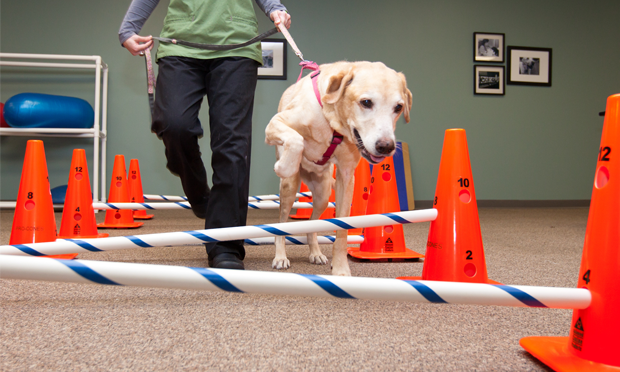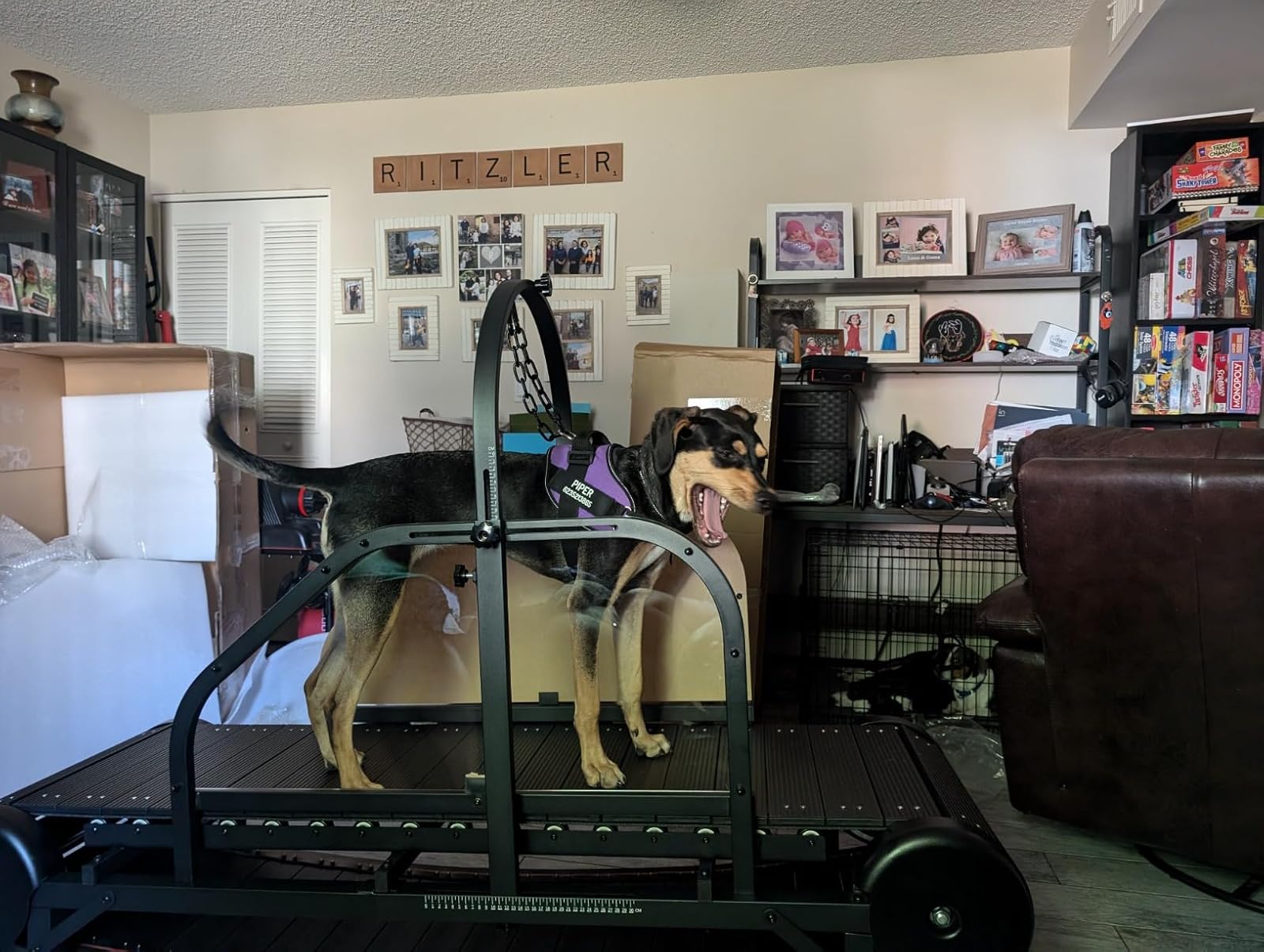When the weather outside turns extreme, keeping your dog active can feel like a challenge. But skipping exercise isn’t an option. Without enough movement, dogs can face serious issues like obesity or destructive behaviors. Chewing furniture or barking excessively often stems from boredom. Indoor activities can help your dog stay fit and happy, even when outdoor walks aren’t possible. Wondering, “How do I exercise my dog without walking?” Don’t worry—there are plenty of fun ways to keep them moving inside.
Key Takeaways
- Indoor exercise is important for your dog's health. It keeps them fit, helps with digestion, and avoids weight problems.
- Keep your dog’s brain active with puzzle toys or scent games. Thinking games lower stress and stop boredom, making your dog happier.
- Choose activities based on your dog's age and breed. Make play easier for older dogs and keep them safe and comfy.
Why Indoor Exercise is Essential
1. Physical Benefits for Dogs
Keeping your dog active indoors isn’t just about burning energy—it’s about their overall health. Regular exercise helps maintain their fitness and agility, keeping their bones, joints, and muscles strong. It also supports a healthy digestive system, reducing issues like constipation or bladder infections. Plus, exercise helps control weight, which is crucial for preventing obesity-related problems.
Did you know? Dogs that exercise regularly tend to sleep better because they’ve released their pent-up energy. A well-rested dog is a happy dog!
Indoor activities also build confidence. Whether it’s learning a new trick or mastering an obstacle course, your dog will feel accomplished and more self-assured.
2. Mental Stimulation and Its Role
Physical activity is important, but don’t forget about your dog’s brain! Mental stimulation keeps them sharp and reduces stress. Activities like puzzle feeders or scent games challenge their problem-solving skills and tap into their natural instincts. You can also try teaching them new tricks or commands. Not only does this strengthen your bond, but it also gives them a sense of purpose.
Interactive toys are another great option. They keep your dog entertained while providing a mental workout. A mentally stimulated dog is less likely to feel bored or anxious, even when stuck indoors.
3. Preventing Behavioral Issues
When dogs don’t get enough exercise, they often find their own ways to release energy—and it’s not always pretty. Chewed-up shoes, dug-up carpets, or endless barking might sound familiar. These behaviors are usually signs of boredom or restlessness.
Pro Tip: Regular indoor exercise can prevent hyperactivity and poor manners, especially in energetic breeds. It’s a simple way to keep your dog happy and your home intact.
By keeping your dog active and engaged, you’ll notice fewer behavioral problems and a calmer, more content companion.

How Do I Exercise My Dog Without Walking?
1. Bed to Bed Sprint
Turn your home into a mini racetrack! Bed to bed sprints are a fantastic way to get your dog moving indoors. Start by standing near one bed and tossing a toy or treat onto another bed across the room. Encourage your dog to run back and forth between the two. This simple activity boosts their cardiovascular health and helps burn off energy. If you don’t have multiple beds, use couches or other safe furniture. Just make sure the surfaces are sturdy and won’t cause slips.
Pro Tip: Add a bit of excitement by timing your dog’s sprints. See if they can beat their own record!
2. Spin and Twist
Teaching your dog to spin and twist is a fun way to combine exercise with mental stimulation. Hold a treat close to their nose and guide them in a circular motion. Once they complete the spin, reward them with the treat. Repeat the process in the opposite direction to balance their movement. This activity strengthens their core muscles and improves flexibility.
3. Puppy Pushups and Situps
Puppy pushups and situps are perfect for tiring out your dog while improving their obedience skills. Start by asking your dog to sit, then lie down, and return to a sitting position. Repeat this sequence several times. It’s a simple yet effective workout that engages their muscles and keeps their mind sharp. For an added challenge, increase the speed or number of repetitions.
4. Using a Non-Motorized Dog Treadmill (e.g., Ronzeil Dog Treadmill)
If you’re serious about canine fitness, a non-motorized dog running machine like the Ronzeil Dog Treadmill can be a game-changer. These doggo treadmills allow your dog to control the pace, making it a safe and effective way to exercise indoors. Start by introducing your dog to the treadmill slowly. Use treats or toys to encourage them to step on and walk. Over time, they’ll get the hang of it and enjoy the workout. It’s an excellent option for keeping your dog exercised when outdoor walks aren’t possible.
Note: Always supervise your dog while using a treadmill to ensure their safety.

Adapting Indoor Activities to Your Dog
1. Considering Age and Breed
Not all dogs have the same exercise needs. A young, energetic Border Collie will require more intense indoor activities than a laid-back senior Labrador. When planning indoor activities for dogs, think about their age, breed, and energy levels. High-energy breeds thrive on games that challenge both their bodies and minds, like hide-and-seek or puzzle toys. Smaller or less active breeds may prefer gentler activities, such as soft fetch or learning new tricks.
Puppies, on the other hand, need short bursts of activity to match their growing bodies and shorter attention spans. Keep sessions brief but engaging to avoid overexertion. Tailoring activities to your dog’s unique traits ensures they stay happy and healthy indoors.
2. Adjusting Intensity for Senior Dogs
Senior dogs still need exercise, but their routines should be gentler. Low-impact indoor pet activities like dog yoga or soft fetch with plush toys are perfect for older dogs. These activities help maintain muscle strength and joint flexibility without causing strain. Puzzle toys are another great option, as they provide mental stimulation while encouraging light movement.
Shorter, more frequent sessions work best for senior dogs. Aim for at least 30 minutes of activity daily, broken into manageable chunks. This helps prevent stiffness and keeps their weight in check. Remember, even small adjustments can make a big difference in their overall well-being.
3. Ensuring Comfort and Safety
Your dog’s comfort and safety should always come first. Clear the area of obstacles before starting any indoor activities. Use non-slip mats or rugs to prevent accidents, especially for senior dogs or those with mobility issues. Keep an eye on your dog’s energy levels and watch for signs of fatigue, like heavy panting or slowing down. If they seem tired, let them rest.
Hydration is also key. Make sure fresh water is always available during and after playtime. By creating a safe and comfortable environment, you can ensure your dog enjoys their indoor activities without any risks.
Indoor Games for Pets to Boost Mental Stimulation
1. Puzzle Toys and Treat Dispensers
Puzzle toys and treat dispensers are fantastic tools to keep your dog’s mind sharp. These toys challenge your dog to solve problems by manipulating the toy to access hidden treats. Not only do they engage your dog’s mental abilities, but they also help prevent boredom and reduce destructive behaviors. For example, interactive toys like the JW Hol-ee Roller or Tumble Teez can keep your dog entertained for hours. These toys require your dog to nudge, paw, or twist them to release treats, making playtime both fun and rewarding.
Tip: Scatter feeding with puzzle toys can encourage your dog’s natural foraging instincts while slowing down their eating habits. It’s a win-win for their health and happiness!
If you’re looking for creative and effective ways to exercise your dog indoors, puzzle toys are a great place to start. They provide both mental stimulation and light physical activity, making them ideal for any dog.
2. Hide and Seek
Hide and seek isn’t just for kids—it’s one of the best indoor games for pets! This game taps into your dog’s natural instincts and sharpens their problem-solving skills. Start by hiding in an easy spot and calling your dog’s name. When they find you, reward them with praise or a treat. As they get better, increase the difficulty by hiding in more challenging places.
You can also hide treats or toys around the house for a treasure hunt. This activity engages their sense of smell and keeps them mentally stimulated. It’s a simple yet effective way to keep your dog entertained while you’re indoors.
Pro Tip: Use this game to reinforce commands like “stay” and “come.” It’s a fun way to combine training with play!
3. Teaching New Tricks
Teaching your dog new tricks is another excellent way to boost their mental agility. Whether it’s learning to shake hands, roll over, or even put toys away, trick training keeps your dog’s brain active and engaged. It also strengthens your bond and builds their confidence.
Start with simple commands and gradually increase the difficulty. For example, teaching your dog to clean up their toys can be both practical and fun. Use positive reinforcement, like treats or verbal praise, to encourage them. Regularly introducing new tricks can even help prevent cognitive decline in older dogs.
Note: Short, frequent training sessions work best. Dogs learn better when they’re not overwhelmed, so keep it fun and lighthearted!
By incorporating these indoor games for pets into your routine, you’ll provide your dog with the mental stimulation they need to stay happy and healthy.
When bad weather or extreme heat keeps you indoors, your dog’s fitness and happiness shouldn’t take a backseat. Indoor exercise offers countless benefits, from preventing boredom to maintaining a healthy weight. Try creative activities like fetch races or teaching new tricks. These not only keep your dog active but also strengthen your bond.
Remember, regular movement and mental stimulation can prevent destructive behaviors and even prolong your dog’s life. Whether it’s through interactive toys, puzzle feeders, or gentle exercises for senior dogs, there’s always a way to adapt. Don’t let bad weather or heat stop you from prioritizing your dog’s well-being. Your furry friend deserves it!
FAQ
1. How can I keep my pet cool during extreme heat indoors?
Use fans or air conditioning to maintain a comfortable temperature. Provide fresh water and encourage your dog to rest on cool surfaces like tiles.
2. How do I monitor for signs of overheating in my dog?
Watch for excessive panting, drooling, or lethargy. If you notice these signs, cool down a dog or cat immediately by offering water and moving them to a cooler area.
3. What’s the best way to cool down a dog or cat after exercise?
Offer water and use a damp towel to gently wipe their fur. Let them rest in a shaded or air-conditioned space to recover.










0 Comments